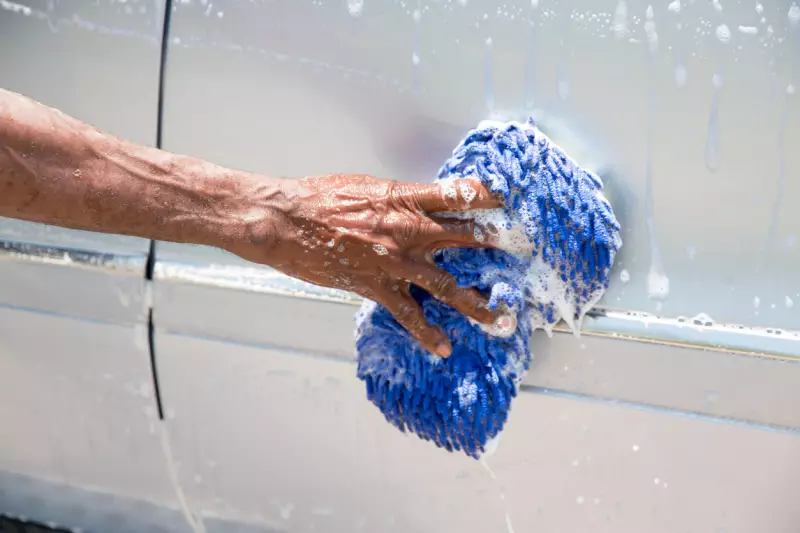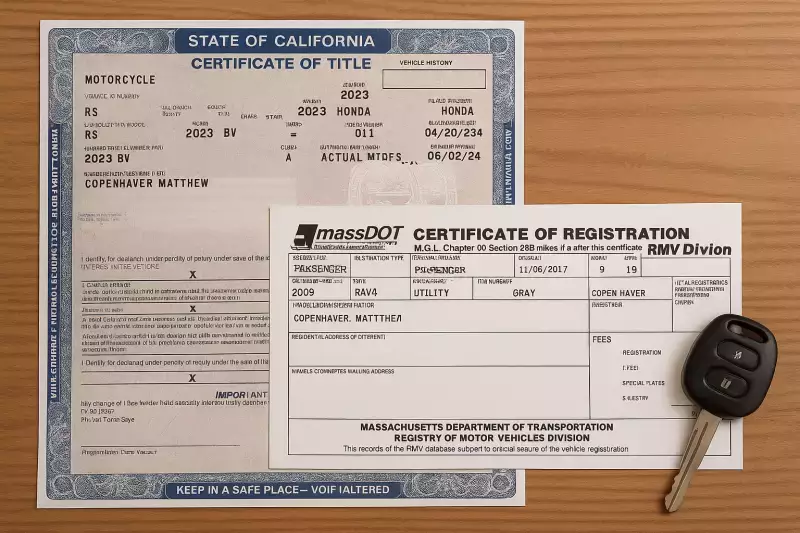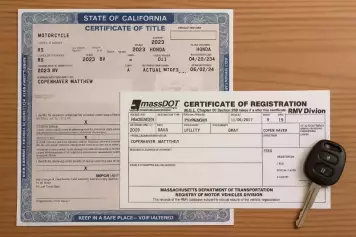Cars are magnets for sticky substances, from tree sap and pollen to dead insects. Yet, no sticky substance seems more annoying and detrimental to your vehicle than tar.
Thanks to its adhesive and waterproofing properties, tar plays an important role in construction and road paving. Unfortunately, it can wreak havoc on your vehicle's body, especially around the lower panels and near the tires, where tar often splashes up from freshly paved or repaired roads. Over time, that tar can harden, making it difficult to remove, making addressing tar stains promptly important to avoid long-term damage to the car's paint and finish.
How to Remove Tar from a Car
There are several ways to remove tar from your car, from commercial tar removers and common household products, like WD-40, to DIY solutions using baking soda or peanut butter. Regardless of the method that suits you best, some preparation is required to remove tar on a car.
Here are the steps you should take, no matter what method you use for removing tar:
- Gather your supplies: You’ll want to have a bucket of warm water, a sponge, car wash soap, and microfiber cloths readily available.
- Move your car out of the hot sun: Whenever you clean a vehicle, including removing tar, you should do so in a cool, shady spot.
- Take note of any areas affected by the tar: This means inspecting the entire vehicle to identify any places with tar. This is an important step because you don’t want to miss any spots, and you’ll want to focus on one panel at a time.
- Follow the instructions: Whether you use a DIY tar removal method found online or a commercial tar removal product, you must know how to use it properly for the best results.
Using Commercial Tar Removers
There are many tar removal products specifically designed to get asphalt off a car without damaging its surface. Most of these products are applied in the same manner: they are applied to the vehicle's surface using a microfiber cloth, gently rubbing the tar spot, followed by a thorough rinse until all the tar is gone. While this is generally how most commercial tar removal products work, it is still important to follow the directions on the packaging.
Using Household Products Like WD-40
Common household items like WD-40 or mineral spirits can also break down tar. If you're using WD-40, spray a small amount on the tar spot after thoroughly cleaning the car. Let it sit for a few minutes, and then apply additional WD-40 to a microfiber cloth to gently wipe away the spots.
If using mineral spirits, use it to dampen a microfiber cloth and gently rub any tar spots in a circular motion. As it softens and becomes loose, use a clean, dry cloth to remove it. Mineral spirits and WD-40 can remove any previously applied polish or wax coatings. So, it is important to quickly test a hidden spot before using it.
Applying Baking Soda and Water Paste
Sometimes, especially when the tar spots are relatively small, baking soda and water are all you need to remove tar from a car's surface. Create your homemade tar removal paste by mixing three parts baking soda with one part water. Apply it directly to the affected surface, and use a microfiber cloth or a sponge to gently rub the paste onto the spot in circular motions to get the tar off. Be sure to avoid excessive pressure, or you could scratch the paint.
Using Peanut Butter
Another popular DIY solution for removing tar on a car is peanut butter. However, you can't use just any old peanut butter. Thanks to the natural oils in creamy peanut butter, it is a surprisingly effective method, but the only type of peanut butter you should use because chunky peanut butter is abrasive and may damage the surface of your car.
Like other methods of removing tar, put a small amount of the creamy peanut butter on a soft microfiber cloth or sponge and gently rub it into the tar spot. Allow it to sit for at least five to ten minutes, and then use a clean microfiber cloth to wipe off the peanut butter and tar.
Ice for Hardened Tar
To remove tar that has hardened, wrap ice in a cloth and hold it against the hardened tar for at least five to ten minutes. This should make the tar harder and more brittle, making it easier to remove using the edge of a credit card, ice scraper, or similar plastic tool. Remember to scrape gently so as not to damage the vehicle’s paint.
How to Remove Tar from a Car Without Damaging Paint

While all of these methods are effective in removing tar on a car, you must take certain steps to ensure that the tar removal process does not harm your vehicle’s paint job, like:
- Avoid using abrasive tools or harsh chemicals: Only use microfiber cloths, sponges, and commercial products designed or approved to get tar off a car. Abrasive tools, such as wire brushes, scouring pads, and commercial cleaning products containing harsh chemicals, can scratch or discolor the surface of your vehicle.
- Be gentle and always test the process first: Whenever you apply a solution meant for removing tar on a car, always use it gently and be sure to test it on a small, inconspicuous area.
- Always follow product instructions: If you are using a commercial tar removal product, carefully read the instructions before beginning the tar removal process. If you are using a DIY method, be sure to conduct proper online research first. If you are hesitant about tackling tough tar spots on your own or have any questions, consult a professional auto detailer.
Protecting Your Car After Tar Removal
After removing tar from your car, protecting the finish is essential to maintain its appearance and prevent future damage. Proper care ensures the car’s surface stays smooth and protected. Once the tar is gone, reapply wax or a sealant to restore the protective layer stripped away during cleaning. This helps repel dirt and grime and adds shine. Regular washing prevents sticky substances like tar from building up again, and inspecting your car periodically allows you to catch and remove tar before it hardens.
No matter what tar removal process you use, remember to be gentle and take your time to avoid damaging the paint. To minimize future exposure, avoid freshly paved roads and consider installing mud flaps or paint protection film. Patience and regular maintenance will keep your car looking its best while protecting it from the wear and tear of the road.








![Best Sites to Check a Car’s History [2025 Review]](https://media.infopay.net/thumbnails/K8lMeG2QLjE46LPqZlmoi6SunKKdT5qvlaRZk6e1.webp)










![Best Sites to Check a Car’s History [2025 Review]](https://media.infopay.net/thumbnails/K8lMeG2QLjE46LPqZlmoi6SunKKdT5qvlaRZk6e1-w356.webp)
